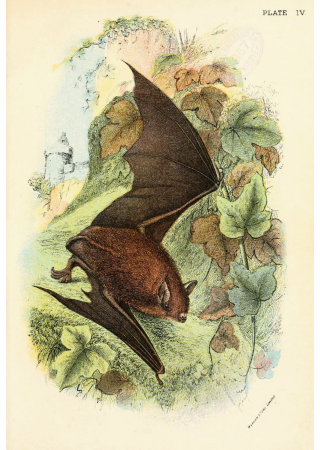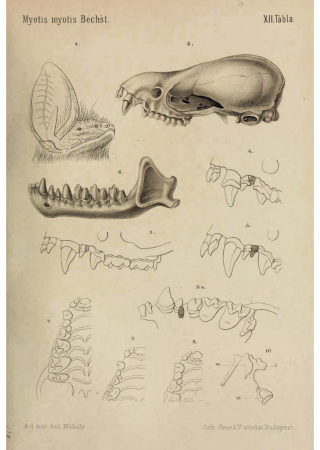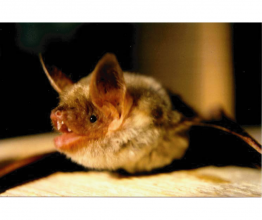Mouse-eared Bat
Myotis myotis
Did you know that… ?
- …mouse-eared bats are polygamous mammals; males can have a harem of up to five females?
- …mouse-eared bats can consume up to half their own body weight in food every night?
- …mouse-eared bats live fairly long; some individuals have been known to reach twenty years?
- …this species of bat can detect the Earth's geomagnetic field and make use of it for navigation?
- …since 1990, this species of bat has been classified as extinct in Great Britain?
- …mouse-eared bats are the most numerous species of bat found in central Europe?
General info
Phylum: Chordata
Class: Mammalia
Order: Chiroptera
Size: length 8 cm, wingspan 40 cm
Food: insects
Habitat: attics
Distribution: Europe, near east
Relationship with humans: useful
Biology
A fairly large species of bat, found in central, southern and partly in eastern Europe, Turkey, Syria and Lebanon. It is distinguished by its straight flight path, with very little zigzagging. It is mostly nocturnal; during the day these bats congregate in attics or in towers. They prey mostly on large insects like Carabids beetles, crickets and moths. Winters are spent in large groups in caves, tunnels or basements, in colonies of several hundred to several thousand. They mate in the fall, but the sperm cells do not fertilize the eggs until spring of the following year. The young are born after 60 to 70 days gestation, and are capable of flight with three weeks, but are not fully independent until around two months.




